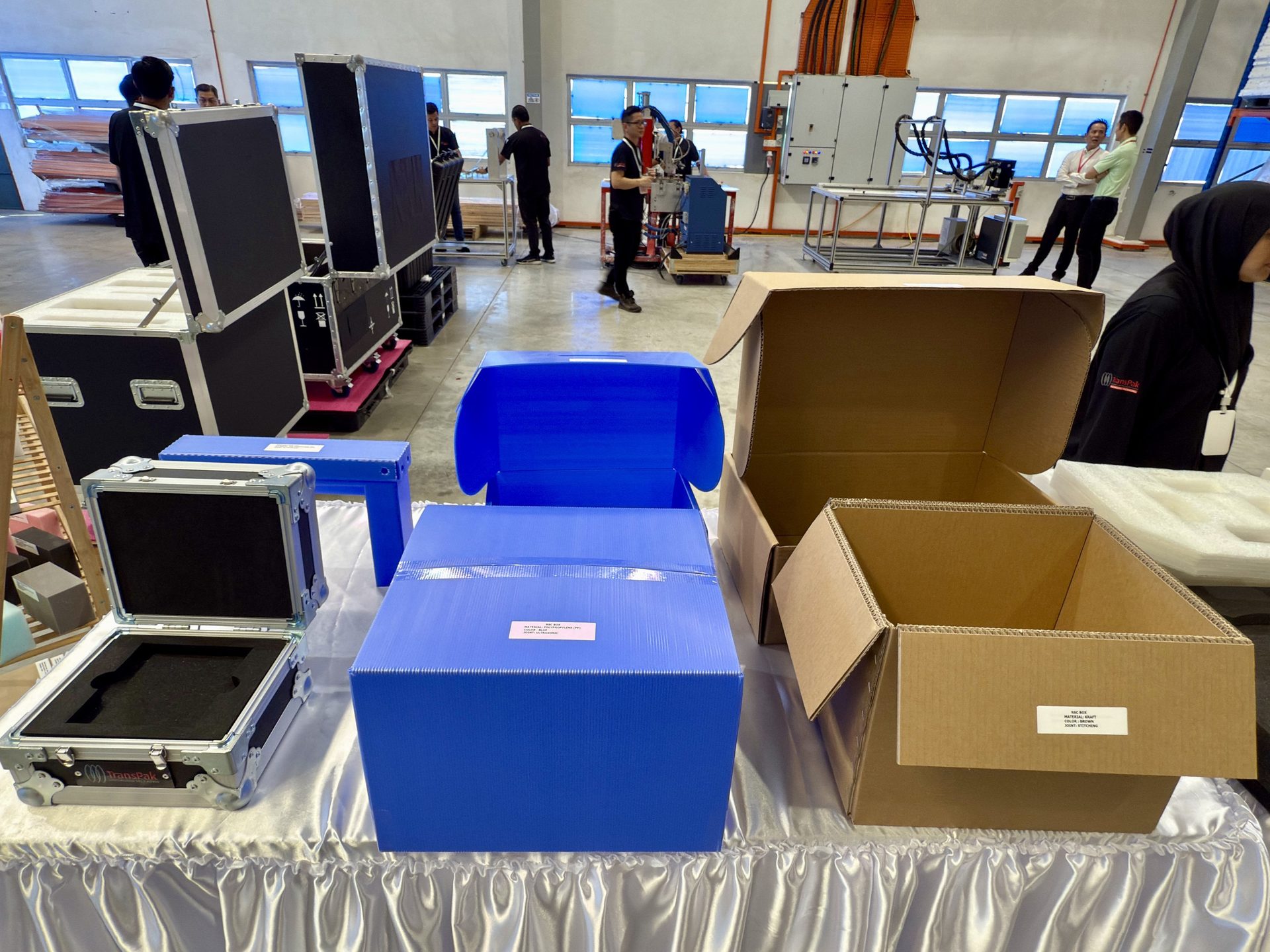A Solutions-Led Approach to Multi-Material Packaging

David Forrest of TransPak makes the case for multi-material packaging, saying that, if done right, it can increase product protection, cut costs, support sustainability goals, and improve customer satisfaction.
By David Forrest, Chief Revenue Officer for TransPak
Adopting a multi-material approach to packaging unlocks significant advantages for both suppliers and their customers. With the growing shipment of large, sensitive, and high-value goods and industrial products, the challenge is ensuring products arrive with zero defects while controlling packaging costs.
How can suppliers re-examine their packaging processes and the materials used to provide more value to their customers? Let's look at some of the latest innovative solutions.
ADVERTISEMENT
Why Consider Multi-Material Packaging?
When a supplier has been shipping products the same way for years, often relying on familiar materials, they usually don't stop to consider alternative solutions. But, as more customers prioritize sustainability and evaluate the materials used in shipments, the demand for eco-conscious options is growing. In response, suppliers are reevaluating their packaging strategies to discover smarter, more efficient ways to ship goods.
Enter multi-material packaging. Multi-material packaging combines a variety of materials, offering solutions tailored to the unique needs of each shipment. Designed from a material-neutral perspective, these packaging solutions incorporate a range of options — from traditional wood to various types of foam, corrugated, and molded materials.
For industries shipping high-value, fragile, or hard-to-transport goods, both protection and cost are critical. With extended supply chains and multiple transportation methods, ensuring products arrive intact is a top priority. Multi-material packaging helps meet this challenge by optimizing protection, reducing waste, and improving overall efficiency — all while supporting sustainability goals.
Suppliers Can Reduce Costs While Ensuring Better Protection
For some suppliers, wood crates are the industry standard. But, if suppliers consider moving to multi-material packaging, they can better protect items while cutting costs.
By questioning their existing packaging and adopting a more solutions-led approach, some suppliers reduce the cost of packaging by more than 50%. Suppliers should seek a vendor who will consider the entire supply chain to holistically design and engineer packaging to fit their needs, helping them save money while ensuring goods arrive intact.
Innovative Materials Help Suppliers Meet Sustainability Goals
As new materials emerge, forward-thinking vendors are integrating them into shipping solutions, helping suppliers reduce their environmental footprint. Companies can make significant strides toward sustainability by eliminating thousands of pounds of wood, engineering out resin-based foam, and adopting biodegradable alternatives.
For example, natural-material foams can match the performance of traditional resin-based foams while being biodegradable, offering a more eco-friendly option.
Some suppliers that have set sustainability goals for 2030 or 2050 are finding they're behind. Mindful packaging choices can help them make progress toward meeting these goals. By questioning the methods and materials being used to pack products, they can achieve wins for their shareholders.

Examples of multi-material packaging.
Courtesy of TransPak
Consider Logistics When Choosing a Packaging Vendor
Integrating logistics into the packaging vendor selection process can enhance quality and unlock cost savings — especially for suppliers managing complex shipping transitions. Whether a product moves from air to ocean to truck, having a single point of contact streamlines communication and reduces inefficiencies.
For example, during the pandemic, some suppliers shifted from ocean freight to air to meet surging demand. Now, as they return to ocean shipping, each leg of the journey may require different packaging solutions. Deeply understanding the implications of these decisions is critical to ensuring the packaging and logistics network work seamlessly together.
Total supply chain costs must also be factored in. When separate entities manage packaging and logistics, miscommunication can lead to unexpected cost increases. A packaging solution that appears cost-effective upfront may drive up logistics expenses elsewhere in the supply chain, ultimately increasing total costs. A holistic approach ensures efficiency, cost savings, and a more resilient supply chain.
How Can Over-Engineering Be Avoided?
Adopting a solutions-led approach means the packaging is designed to meet the unique needs of the supplier. By aligning with a supplier's goals for sustainability, timing, and budget, vendors can design efficient packaging solutions that prevent excess costs from being passed on to customers.
The bottom line is that suppliers always have options to consider when it comes to packaging and logistics.
Enhancing the Unboxing Experience: A Strategic Advantage for B2B Packaging
Beyond the operational benefits of multi-material packaging, there is a significant opportunity to enhance the unboxing experience — a factor often overlooked in the business-to-business (B2B) sector.
While unboxing videos have gained traction in the consumer market, the same principles can positively impact B2B interactions. When a customer opens a package, their experience reflects on the supplier's brand. Over-packaging — like oversized boxes, excessive padding, and non-recyclable materials — can create a negative perception.
Suppliers can strengthen customer relationships by thoughtfully designing the unboxing experience. Key considerations include the right amount of packaging, the sustainability of materials, the protection of the item during transit, and the ease of reuse or disposal. Addressing these factors showcases attention to detail and reinforces a commitment to sustainability and customer satisfaction.
Multi-Material Packaging Options Benefit Both Suppliers and Their Customers
As supply chains become more complex, packaging decisions must be made with a holistic view, considering logistics, material efficiency, and the unboxing experience.
By adopting a solutions-driven approach and embracing multi-material packaging, suppliers can enhance product protection, reduce costs, and achieve sustainability goals—all while improving the overall customer experience.

About the author
David Forrest is the Chief Revenue Officer for TransPak. He is dedicated to developing sustainable multi-material packaging solutions for TransPak's Fortune 500 customers while growing its global customer base.

